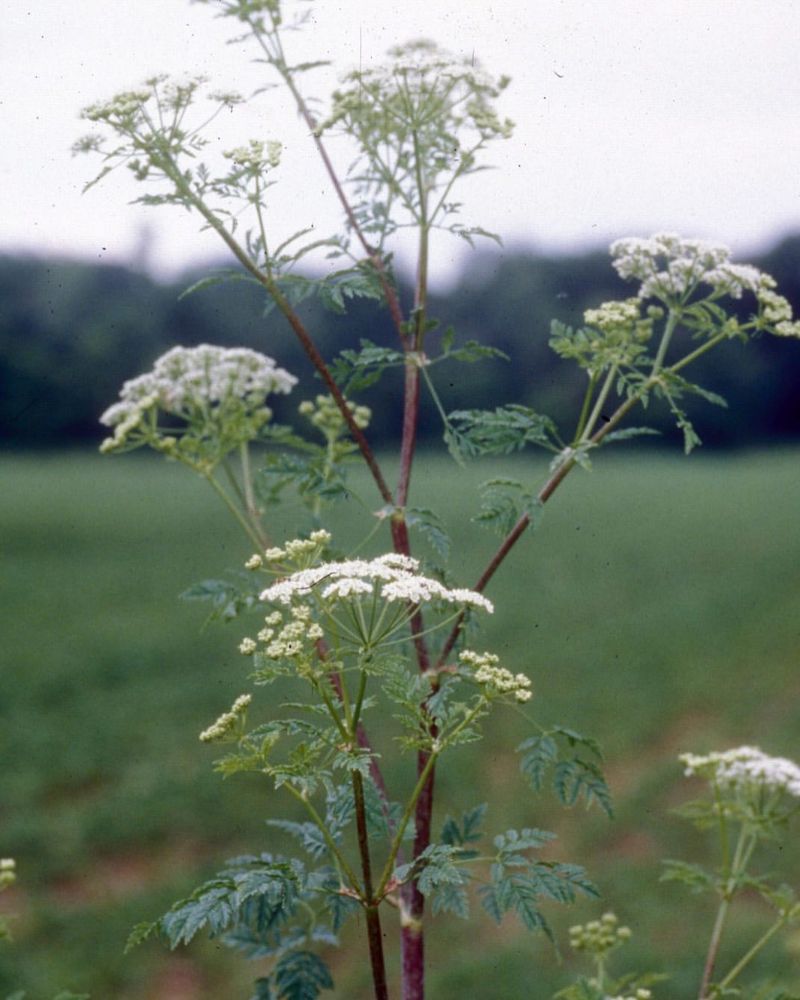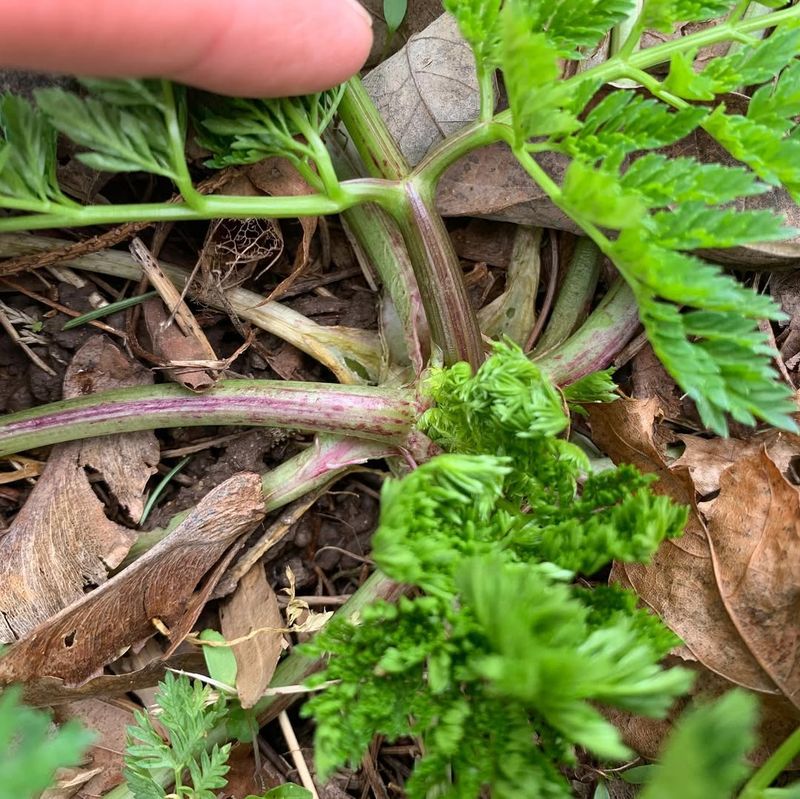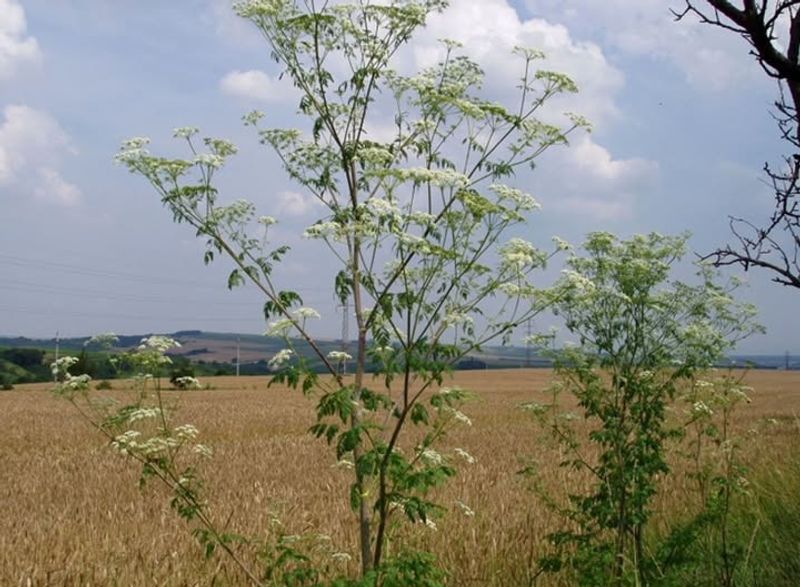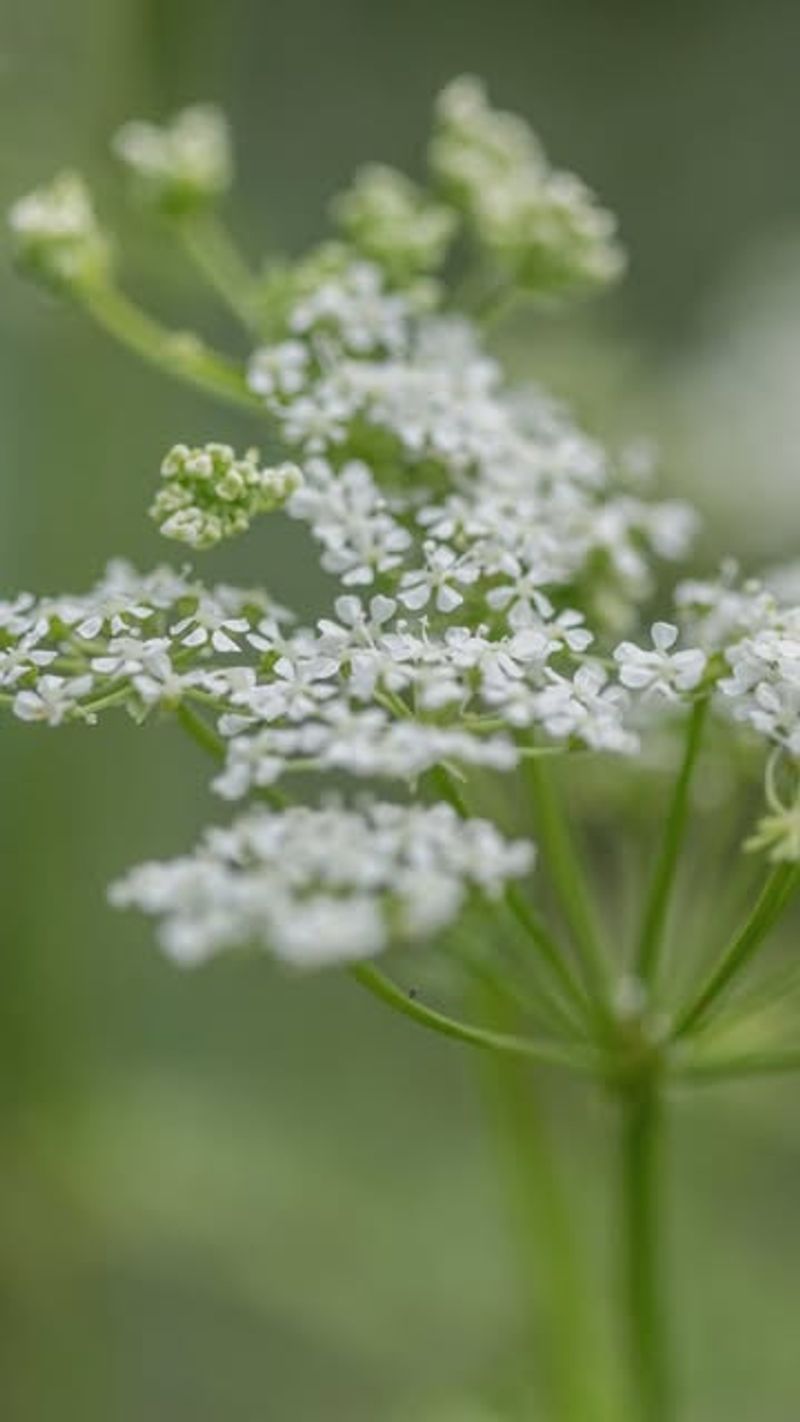Winter may look calm and quiet in Georgia yards, but one plant lurking in the cold can cause more trouble than all your summer weeds combined.
Poison hemlock may blend in with its delicate green foliage, but this highly toxic plant is dangerous to kids, pets, and curious wildlife.
Its harmless appearance fools plenty of homeowners, making identification essential.
Knowing what poison hemlock looks like is half the battle; keeping your yard safe is the rest.
Poison Hemlock Looks Deceptively Harmless
At first glance, poison hemlock might remind you of Queen Anne’s lace or wild carrot, plants that seem innocent enough.
The white, umbrella-shaped flower clusters and feathery green leaves create an almost pretty appearance that tricks many homeowners.
But don’t be fooled by its delicate look.
Every single part of this plant contains dangerous toxins called alkaloids that can cause serious harm.
Even touching it with bare hands can lead to skin reactions in sensitive individuals.
Winter Growth Makes It Extra Dangerous
Most people assume toxic plants wither when temperatures drop, but poison hemlock actually thrives in Georgia’s mild winters.
The cooler months trigger aggressive growth, causing it to spread rapidly across yards, ditches, and fields.
While other vegetation goes dormant, hemlock stands out as one of the few green plants around.
This makes it more noticeable but also more tempting for curious kids and pets to investigate, increasing the danger during a season when you least expect it.
Purple Spots Are Your Warning Sign
Nature gave poison hemlock a built-in warning system that you need to recognize immediately.
Look closely at the stems and you’ll notice purple or reddish blotches scattered across the smooth, hollow surface.
These distinctive markings separate hemlock from harmless lookalikes that have solid green stems.
Think of them as nature’s danger signs, similar to bright colors on poisonous snakes.
If you spot these purple splotches on any plant in your yard, keep everyone away and consider professional removal right away.
Pets Face Life-Threatening Risks
Dogs and cats naturally explore their surroundings by sniffing and sometimes tasting plants they encounter.
Unfortunately, even a small nibble of poison hemlock can trigger severe symptoms including drooling, tremors, and difficulty breathing within just hours.
Livestock like goats and horses are equally vulnerable, with cases reported across Georgia farms annually.
The toxins attack the nervous system rapidly, making quick veterinary intervention absolutely critical.
Always supervise outdoor time and remove any suspicious plants before tragedy strikes your furry family members.
Children Are Particularly Vulnerable
Kids love exploring nature, building forts, and making pretend food from plants they find outdoors.
Poison hemlock’s hollow stems make perfect whistles or pretend swords, creating a toxic temptation for imaginative play.
Children’s smaller body weight means toxins affect them faster and more severely than adults.
Symptoms can appear within thirty minutes of contact or ingestion.
Teach your kids never to touch unknown plants, and regularly walk your property to identify and eliminate hemlock before it becomes a playground hazard for neighborhood children.
Removing It Requires Extreme Caution
Pulling poison hemlock isn’t like yanking ordinary weeds from your garden.
The plant’s oils can absorb through your skin, causing burning sensations, rashes, and potential systemic poisoning depending on exposure levels.
Always wear heavy gloves, long sleeves, pants, and eye protection before attempting removal.
Many Georgia homeowners choose professional removal services instead of risking exposure.
Never burn hemlock plants either, as inhaling the smoke concentrates toxins and can cause respiratory failure.
Bag everything carefully and dispose of it properly through hazardous waste channels.
It Spreads Faster Than You Think
A single poison hemlock plant produces thousands of seeds that scatter easily through wind, water, animals, and even on your shoes or car tires.
What starts as one small plant can transform into a massive infestation covering entire yards within a single season.
Georgia’s climate provides perfect conditions for rapid spread, especially in disturbed soil areas like construction sites or recently cleared land.
Check your property monthly during winter for new growth.
Early detection and removal prevent the overwhelming task of dealing with established colonies that threaten entire neighborhoods.
Knowing Symptoms Could Save Lives
Recognizing poisoning symptoms quickly can mean the difference between recovery and tragedy.
Watch for excessive salivation, dilated pupils, muscle tremors, slow heart rate, and difficulty breathing after any suspected contact or ingestion.
Victims often experience nausea, vomiting, and confusion as toxins attack the nervous system.
Never wait to see if symptoms improve on their own.
Time is critical, and medical professionals need to know exactly what plant caused the exposure for proper treatment protocols.









